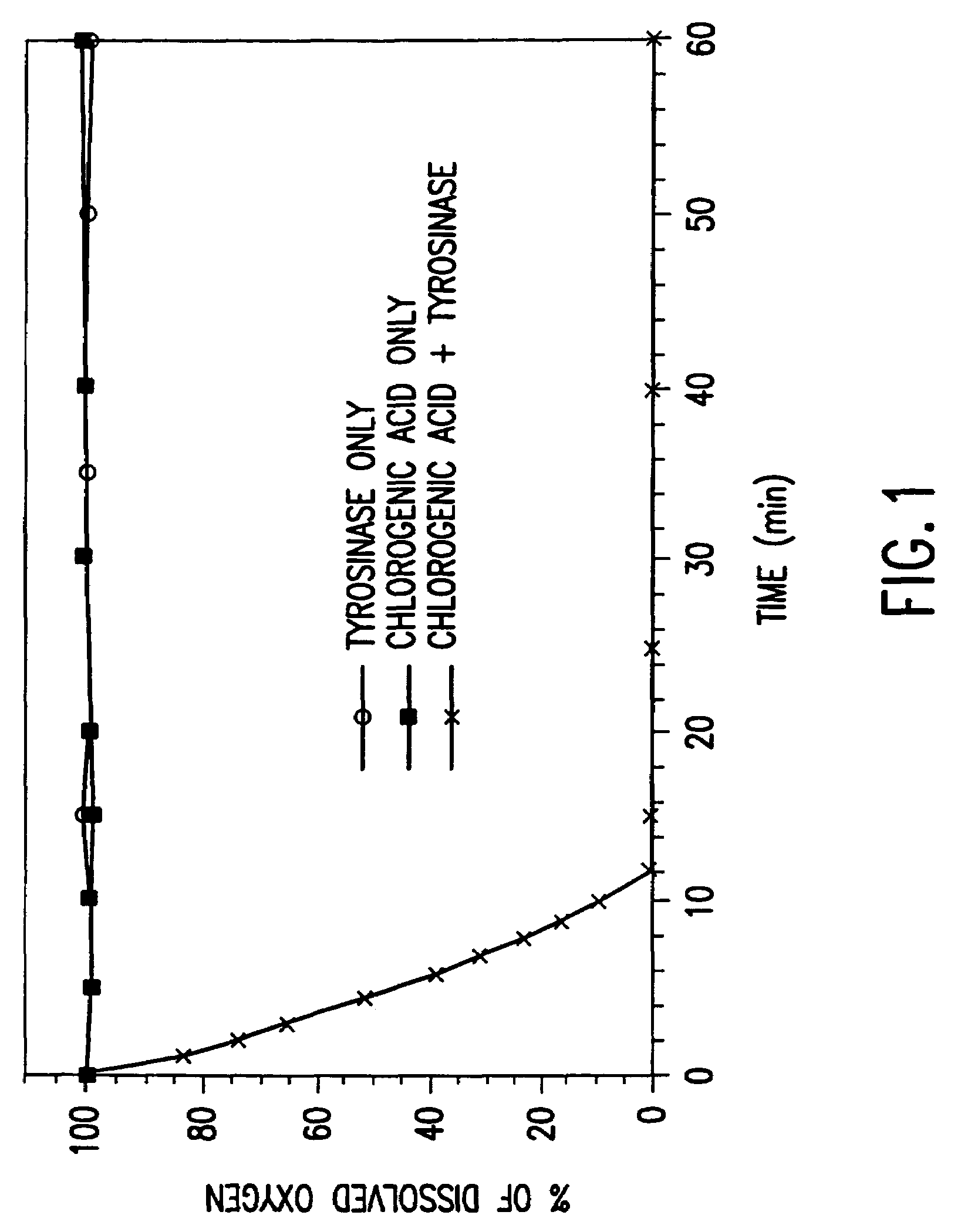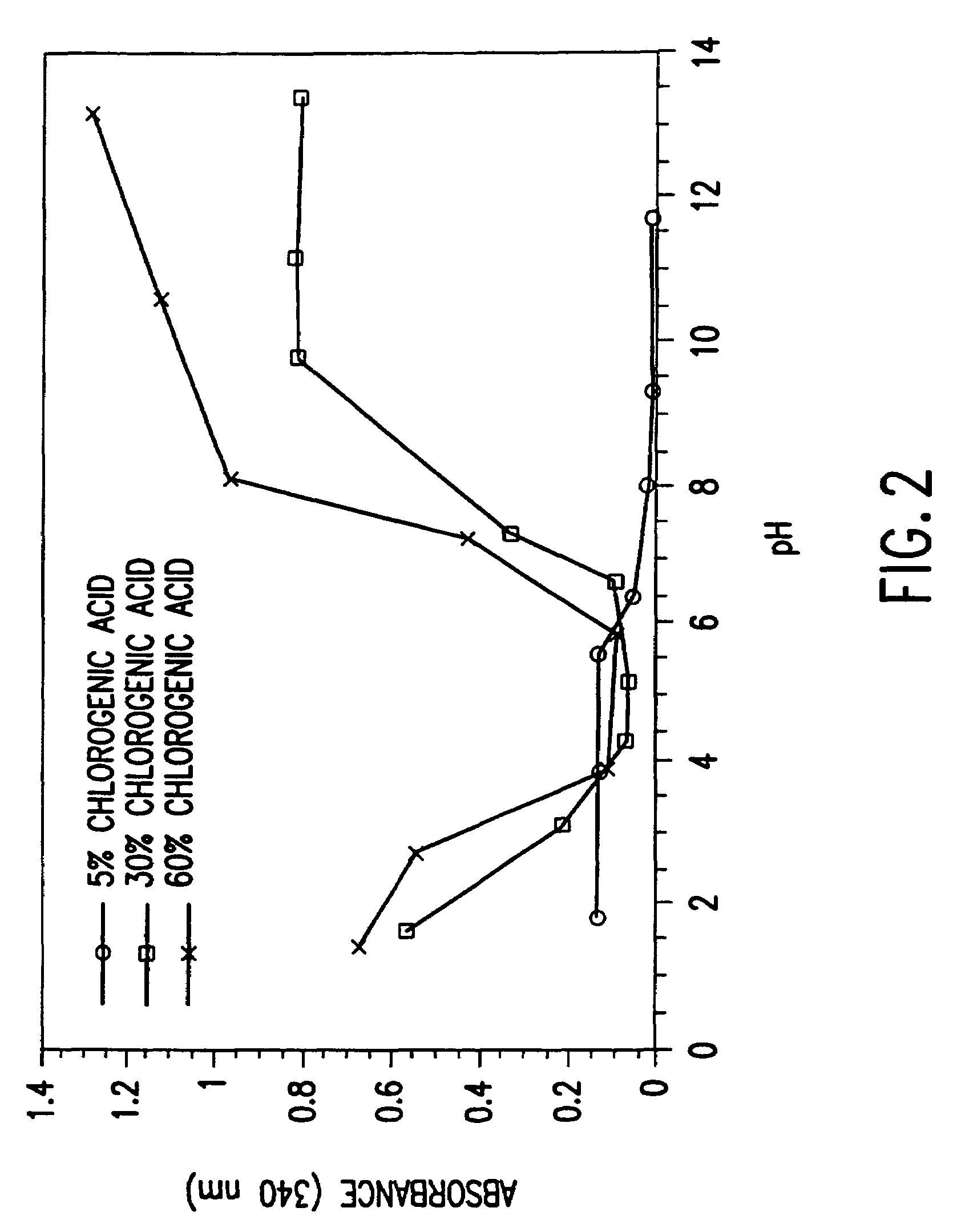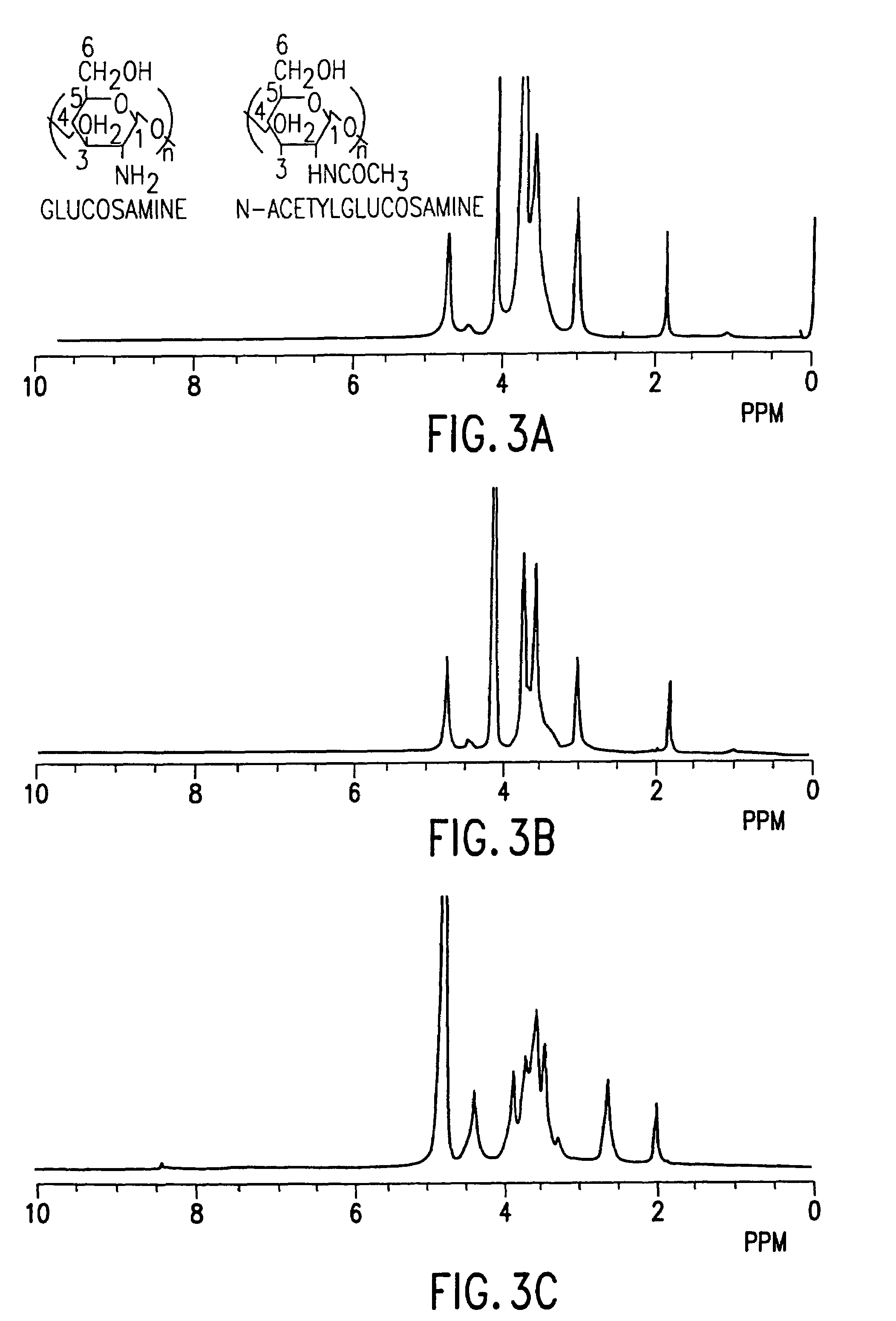Modified chitosan polymers and enzymatic methods for the production thereof
a technology of chitosan polymer and chitosan polymer, which is applied in the field of enzymatic modification of natural oligomers and polymers, can solve the problems of inability to fully exploit these natural polymers, lack of clean, effective and versatile processes for modifying the polymers, and relatively under-exploitation of other natural and abundant polysaccharide polymers
- Summary
- Abstract
- Description
- Claims
- Application Information
AI Technical Summary
Benefits of technology
Problems solved by technology
Method used
Image
Examples
example 1
6.1. Example 1
Enzymatic Activity of Tyrosinase Under Acidic Conditions
[0092]The reactivity of tyrosinase under mildly acidic conditions was studied to verify that the enzyme remains active in acidic solution. The progress of the reaction was measured by monitoring the consumption of dissolved oxygen, using the method described in Mayer et al., “Assay of catechol oxidase: A critical comparison of methods,”Phytochem., 5:783-789 (1966). The dissolved oxygen probe used in these measurements was obtained from Microelectrodes, Londonderry, N.H. Chlorogenic acid (6 mM) was added to a 0.16% chitosan solution, and the pH was adjusted to about 5.8 to 6.0. Tyrosinase (60 U / mL) was added, the reaction vessel sealed, and the dissolved oxygen content measured as a function of time. Two control solutions were prepared and monitored in the same manner, one containing only tyrosinase and chitosan (no phenolic compound), and one containing only chlorogenic acid and chitosan (no enzyme). The results o...
example 2
6.2. Example 2
Preparation and Characterization of Base-Soluble Modified Chitosan Polymers
[0093]A chitosan polymer modified with chlorogenic acid was prepared. A 0.16% chitosan solution was incubated with chlorogenic acid (6 mM) and tyrosinase. The resulting modified chitosan polymer is designated as “60%”, since the reacting solution contained a molar ratio of chlorogenic acid to chitosan amino groups of 0.6 (i.e., the equivalent amino group concentration was 10 mM). The reaction was carried out in a 150 mL beaker with a total of about 25 mL of solution with constant stirring, and the beaker was left open to air in order to minimize any problems associated with oxygen depletion in the solution. A dissolved oxygen probe was used to monitor the reaction, and measurements indicated that the amount of dissolved oxygen remained at about 70% relative to the air saturation value.
[0094]As the reaction proceeded, the initially colorless solution turned brown, and a dark precipitate formed. T...
example 3
6.3. Example 3
Preparation And Characterization of “Twice Reacted” Base-Soluble Modified Chitosan Polymers
[0097]A modified chitosan polymer was prepared according to Example 2. The collected and washed modified chitosan polymer was redissolved at high pH, then the pH was adjusted to about 8 by addition of hydrochloric acid. The solubilized modified chitosan was then incubated overnight with tyrosinase and 6 mM chlorogenic acid, as in Example 2. After reaction, the “twice reacted” or further modified chitosan polymer was collected and washed. It was observed to have a dark brown color, qualitatively darker than the starting material, and a stronger 340 nm absorbance.
PUM
| Property | Measurement | Unit |
|---|---|---|
| pH | aaaaa | aaaaa |
| pH | aaaaa | aaaaa |
| viscosity | aaaaa | aaaaa |
Abstract
Description
Claims
Application Information
 Login to View More
Login to View More - R&D
- Intellectual Property
- Life Sciences
- Materials
- Tech Scout
- Unparalleled Data Quality
- Higher Quality Content
- 60% Fewer Hallucinations
Browse by: Latest US Patents, China's latest patents, Technical Efficacy Thesaurus, Application Domain, Technology Topic, Popular Technical Reports.
© 2025 PatSnap. All rights reserved.Legal|Privacy policy|Modern Slavery Act Transparency Statement|Sitemap|About US| Contact US: help@patsnap.com



